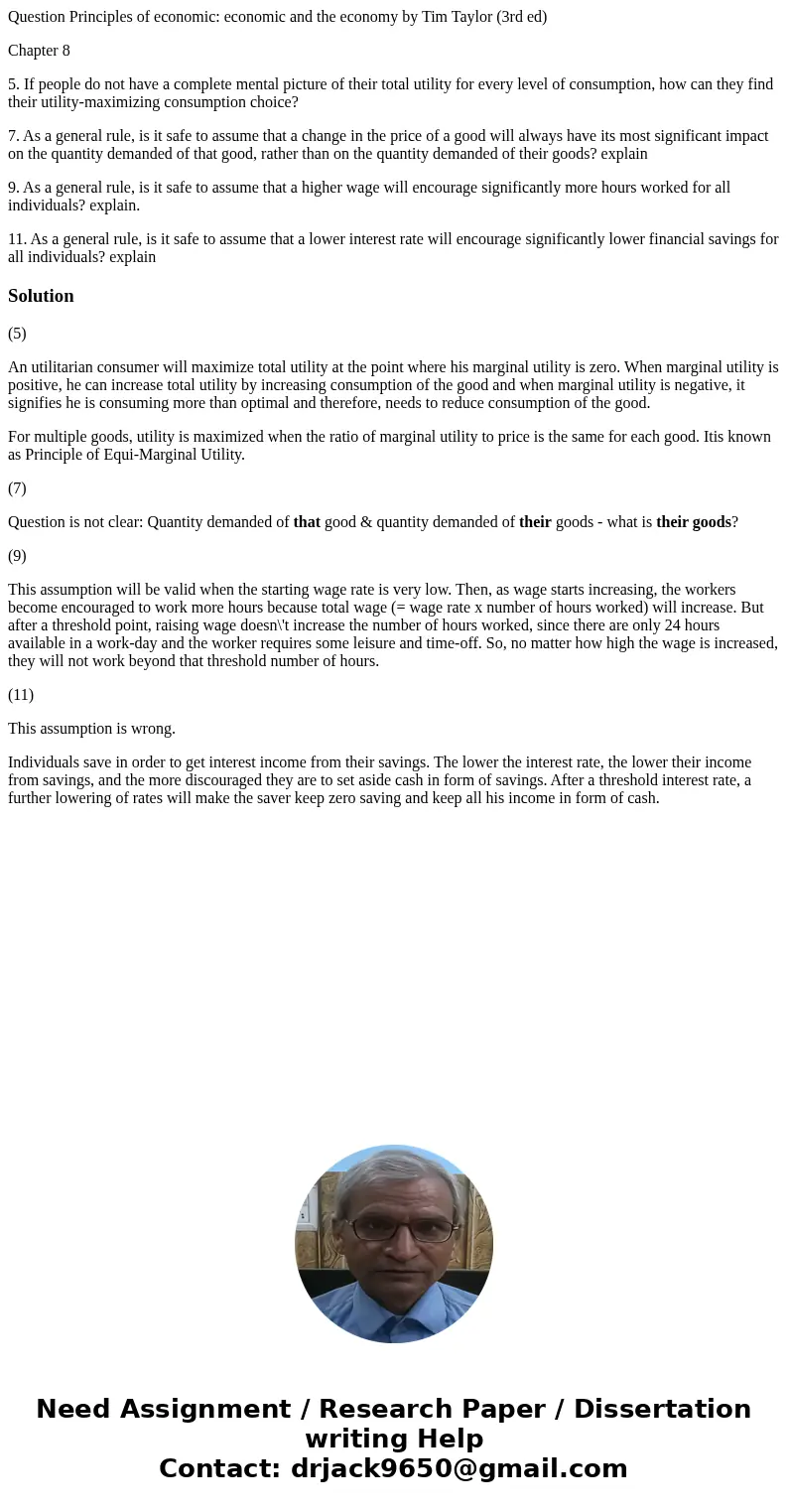Question Principles of economic economic and the economy by
Question Principles of economic: economic and the economy by Tim Taylor (3rd ed)
Chapter 8
5. If people do not have a complete mental picture of their total utility for every level of consumption, how can they find their utility-maximizing consumption choice?
7. As a general rule, is it safe to assume that a change in the price of a good will always have its most significant impact on the quantity demanded of that good, rather than on the quantity demanded of their goods? explain
9. As a general rule, is it safe to assume that a higher wage will encourage significantly more hours worked for all individuals? explain.
11. As a general rule, is it safe to assume that a lower interest rate will encourage significantly lower financial savings for all individuals? explain
Solution
(5)
An utilitarian consumer will maximize total utility at the point where his marginal utility is zero. When marginal utility is positive, he can increase total utility by increasing consumption of the good and when marginal utility is negative, it signifies he is consuming more than optimal and therefore, needs to reduce consumption of the good.
For multiple goods, utility is maximized when the ratio of marginal utility to price is the same for each good. Itis known as Principle of Equi-Marginal Utility.
(7)
Question is not clear: Quantity demanded of that good & quantity demanded of their goods - what is their goods?
(9)
This assumption will be valid when the starting wage rate is very low. Then, as wage starts increasing, the workers become encouraged to work more hours because total wage (= wage rate x number of hours worked) will increase. But after a threshold point, raising wage doesn\'t increase the number of hours worked, since there are only 24 hours available in a work-day and the worker requires some leisure and time-off. So, no matter how high the wage is increased, they will not work beyond that threshold number of hours.
(11)
This assumption is wrong.
Individuals save in order to get interest income from their savings. The lower the interest rate, the lower their income from savings, and the more discouraged they are to set aside cash in form of savings. After a threshold interest rate, a further lowering of rates will make the saver keep zero saving and keep all his income in form of cash.

 Homework Sourse
Homework Sourse